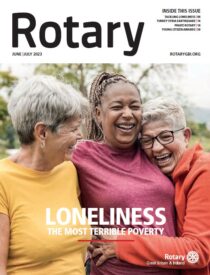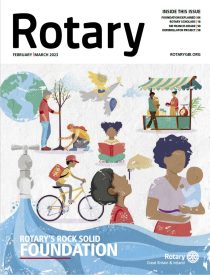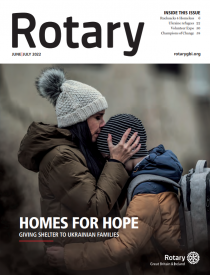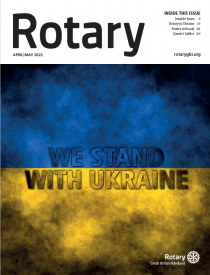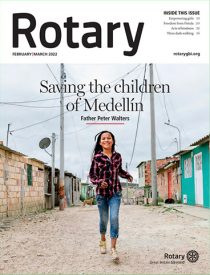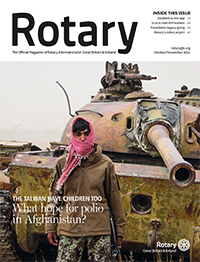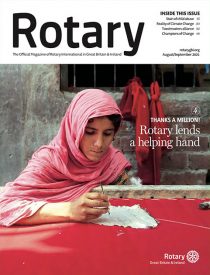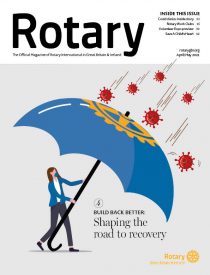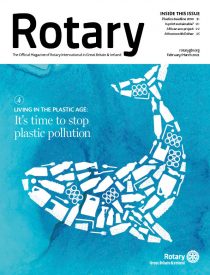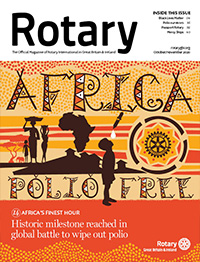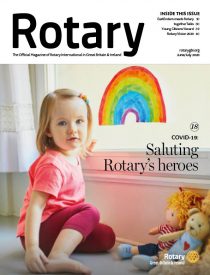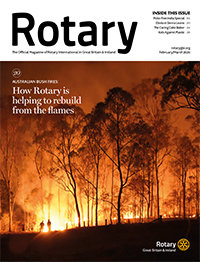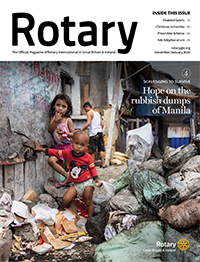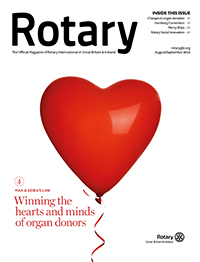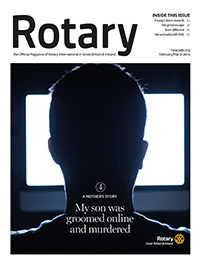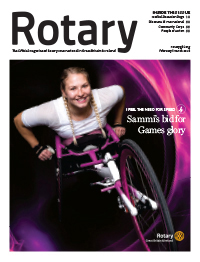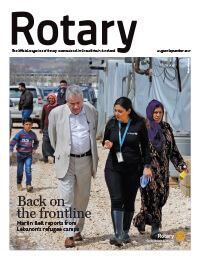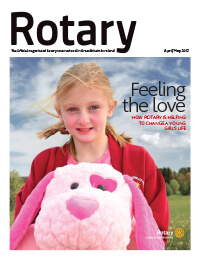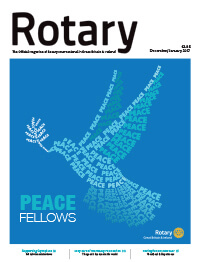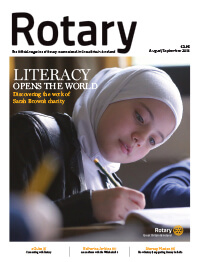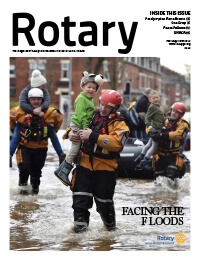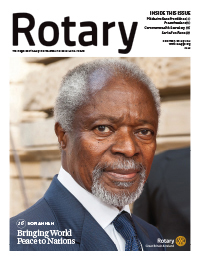Helambu is a picturesque region of highland villages in Nepal, about 80km from the capital Kathmandu.
When the earthquake struck in 2015, it destroyed five schools in the area. The impact was devastating; lives were lost, buildings reduced to rubble and many of the villagers fled to Kathmandu.
Now they are returning, as villages in the area are being rebuilt with international humanitarian organisations such as Rotary working closely with the community.
It was in March 2017 when Stewart Cursley of Rotary District 1200 (Somerset, parts of West Wiltshire and West Dorset), issued a challenge to future club presidents, to come up with an idea for a District international project.
Two clubs put forward ideas: Yeovil Rotary suggested rebuilding a school, destroyed by the 2015 earthquake in Nepal and Yeo Vale Rotary suggested refurbishing wells in Uganda. Both projects were taken on.
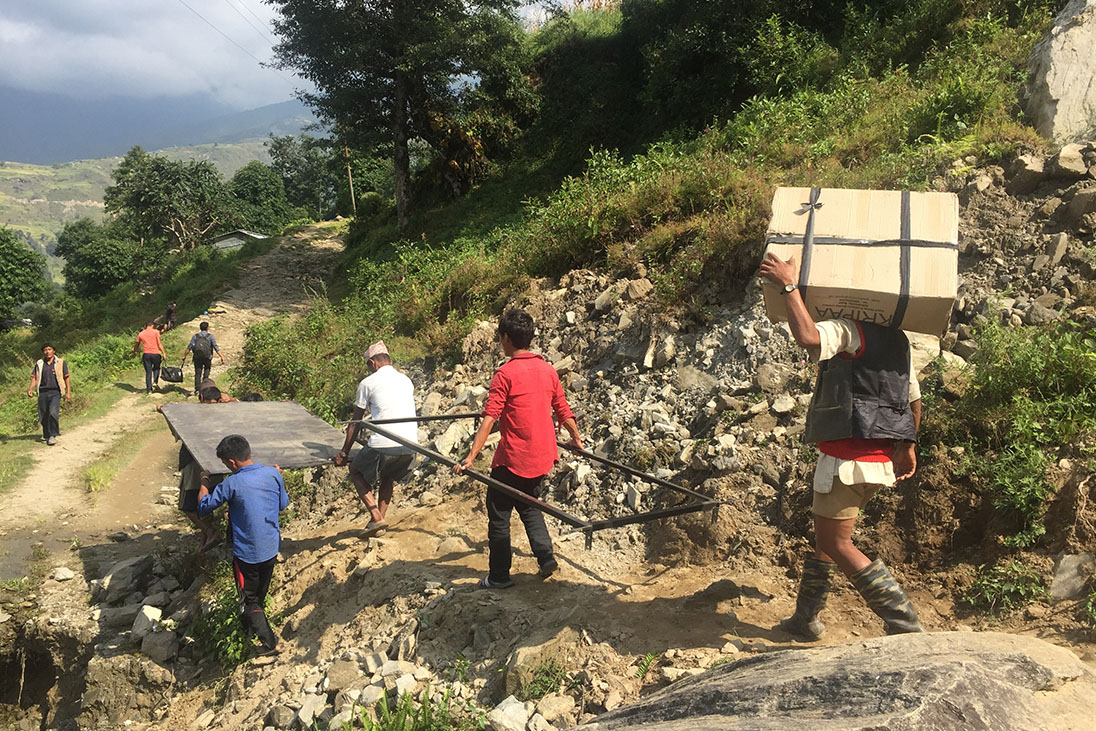

Teams of builders and skilled workers were employed to help move equipment for the school rebuild.
One of our Yeovil Rotary Club members, Luke Simon, is also Chief Executive of the charity School in a Bag, and I had chatted to him about possible international projects to support.
Luke had contacts around the world with his charity and had been particularly moved to support the rebuilding of a school in Nepal after hundreds had been destroyed there by the earthquake.
He had already been involved with an Inner Wheel project to rebuild another school in the country with Jimmy Lama, from the Helambu Education and Livelihood Partnership (HELP) and Mondo Challenge.
Luke knew it could be done, since that project had been completed successfully, and one of those involved in the project group, Simon Slade, was also Chair of International Projects at Yeovil Rotary.
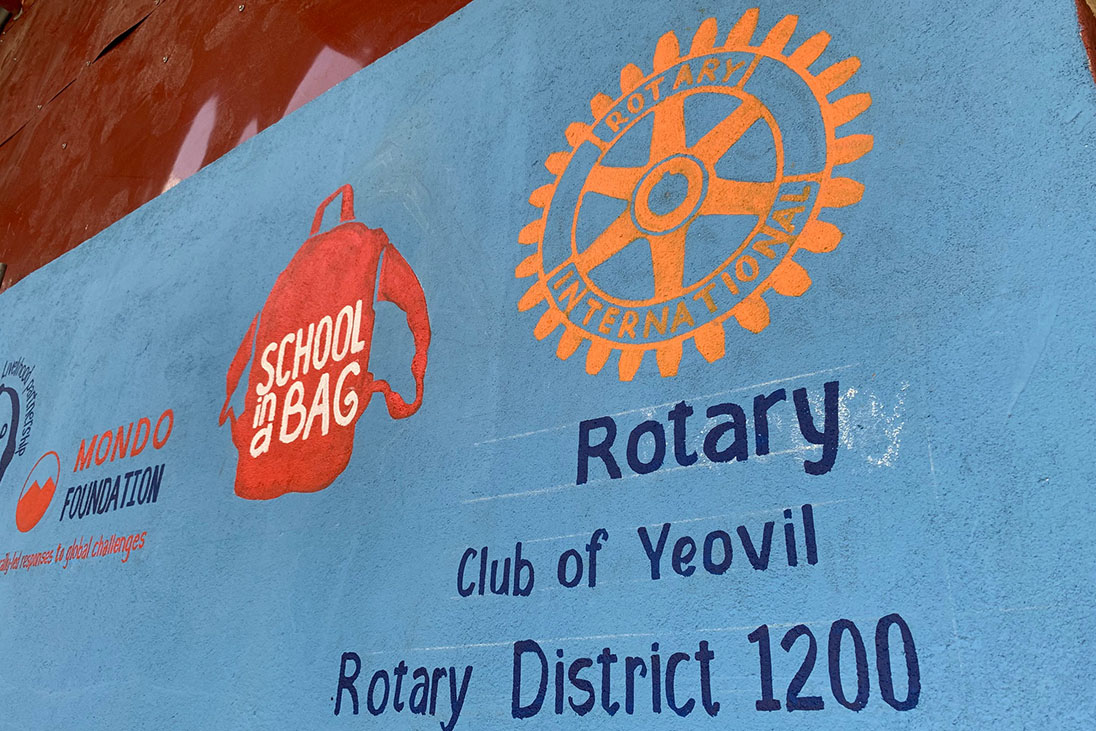

The school rebuild was a collaboration between Yeovil Rotary Club, School in a Bag and Mondo Foundation.
Everything was falling into place.
We spent a considerable amount of time picking a suitable school to rebuild.
The specifications were that the school had to meet local and international earthquake resistance standards.
After much deliberation, we decided to rebuild Shree Saraswoti School in Helambu Province.
The plan was for a two-storey, six classroom, steel reinforced concrete structure building, with brick walls.
This new school would replace the temporary learning shelter which was built soon after the old school was destroyed in the earthquake.”
The budget for the school was around £64,000. At the time it seemed like a mammoth task, particularly as complex school buildings were not eligible for Rotary Foundation support through the Global Grants system.
This new school would replace the temporary learning shelter which was built soon after the old school was destroyed in the earthquake.
Nonetheless, a promise had been made to the villagers that we would do everything we could to fund the school.
We spoke to clubs in the district for support. We put on curry nights, Italian nights, coffee mornings and sought support internationally and outside of the Rotary network.
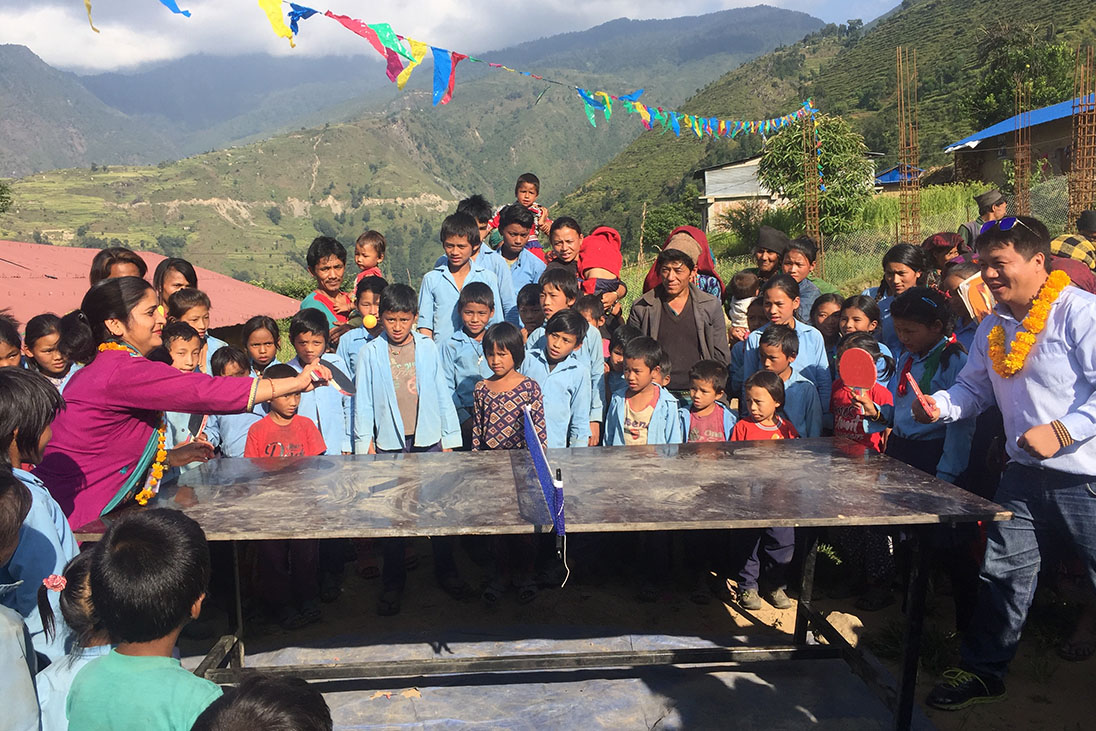

The school sits in a picturesque region of highland villages north of Nepal’s capital, Kathmandu.
Our partners, Mondo Challenge, raised around £30,000 through a grant. We received donations from Rotary clubs in Australia, India and Bromley, as well as from clubs throughout District 1200.
The buildings were designed using sophisticated software, which helped to model an earthquake-resilient frame structure.
Reinforcements to the classroom building had been developed in line with structural analysis and modelling conducted through this software. Red bricks were used for the infill wall.
As of June 2019, there were 133 children attending Shree Saraswoti School. Fifty children who completed their primary education have moved to a nearby secondary school.”
We ensured the bricks were of the highest quality. In addition, the infill wall system was strengthened using earthquake-resilient steel bands which tied the wall to the frame.
Construction work started in May 2018 once enough funds had been raised.
Incoming President of Yeovil Rotary, Caroline Ansell, very kindly led on the Nepalese school project, and the district extended it as one of its international projects for the Rotary year 2018-2019.
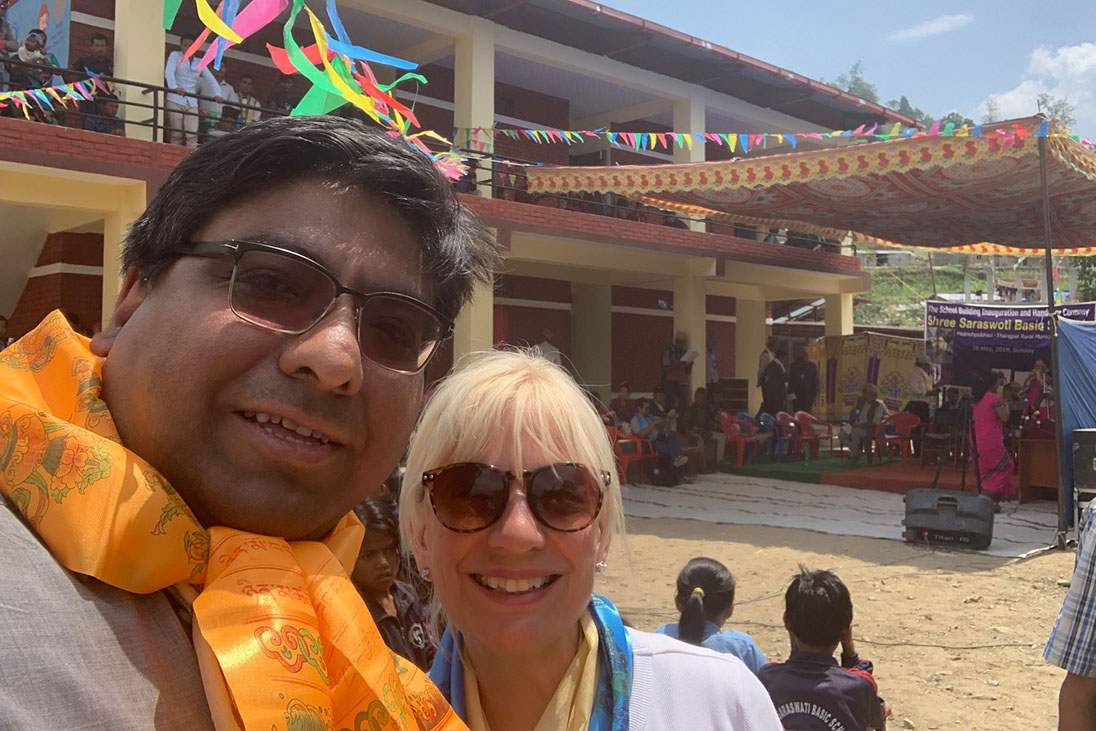

Rotary members Michael Fernando with Caroline Ansell
The monsoons came early, so further work was delayed until November 2018. The local school management committee took the key lead on construction, overseen by Jimmy Lama from HELP.
They employed up to 15 local skilled and unskilled workers each day. The workforce included trained masons, including at least four villagers who were trained at a Masonry Training Programme set up by HELP. A full-time site engineer supervised the building work for six months.
Once the ground had been levelled, the foundations were created and steel reinforced concrete columns placed, forming the main structure of the building.
Brickwork was then laid on the ground floor forming the exterior walls of the classroom block, followed by slab casting in February 2019. The structural work on the second floor was completed by mid-April, including installing the roof. The plastering of the exterior and the interior walls, covering the brickwork to allow for painting, was completed by mid-May.
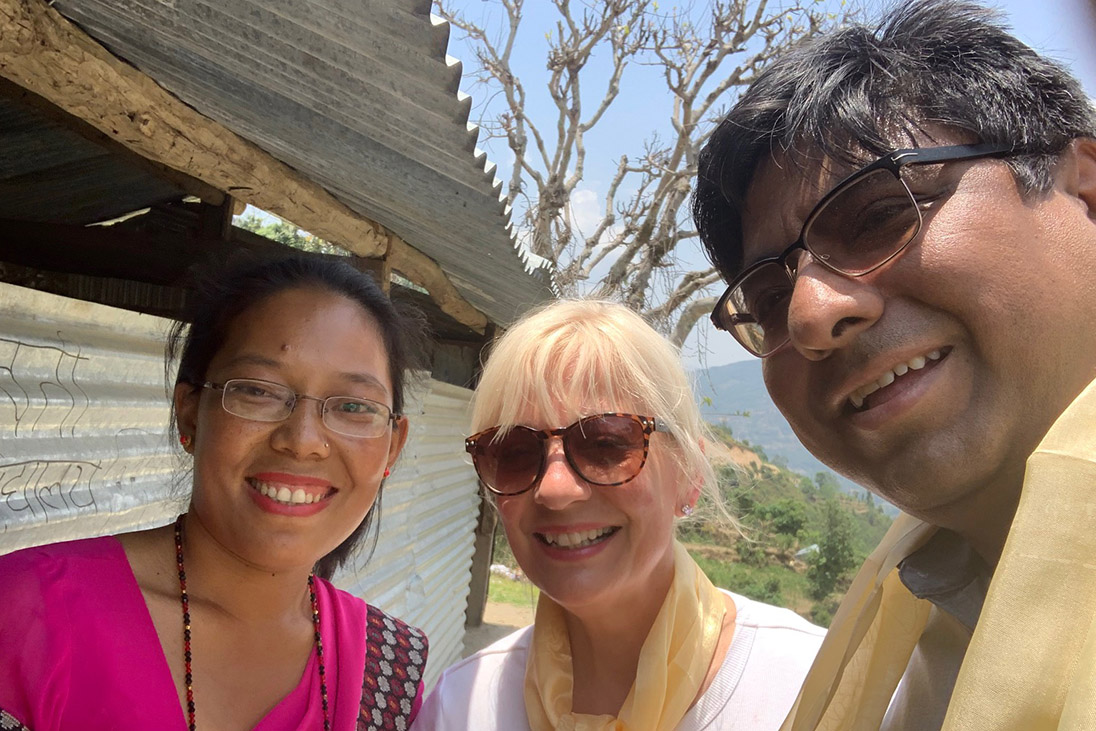

Michael and Caroline celebrate with a teacher during the school’s opening.
Each of the classrooms on the upper floor was installed with a false ceiling, allowing for temperature regulation and reducing noise levels. Between the false ceiling and metal roofing, mesh netting was installed to block off birds and other wildlife from entering, whilst still allowing airflow.
All classrooms have been fitted with electricity and lighting. The interior and exterior walls of the building were painted, and the classrooms were furnished with desks, benches and whiteboards ready for opening on May 26th, 2019.
But that wasn’t the end to the school rebuilding project. A new toilet building was also built with a sophisticated septic tank situated 100 metres away so that the waste is treated and the liquid waste can be used for other purposes, such as biogas.
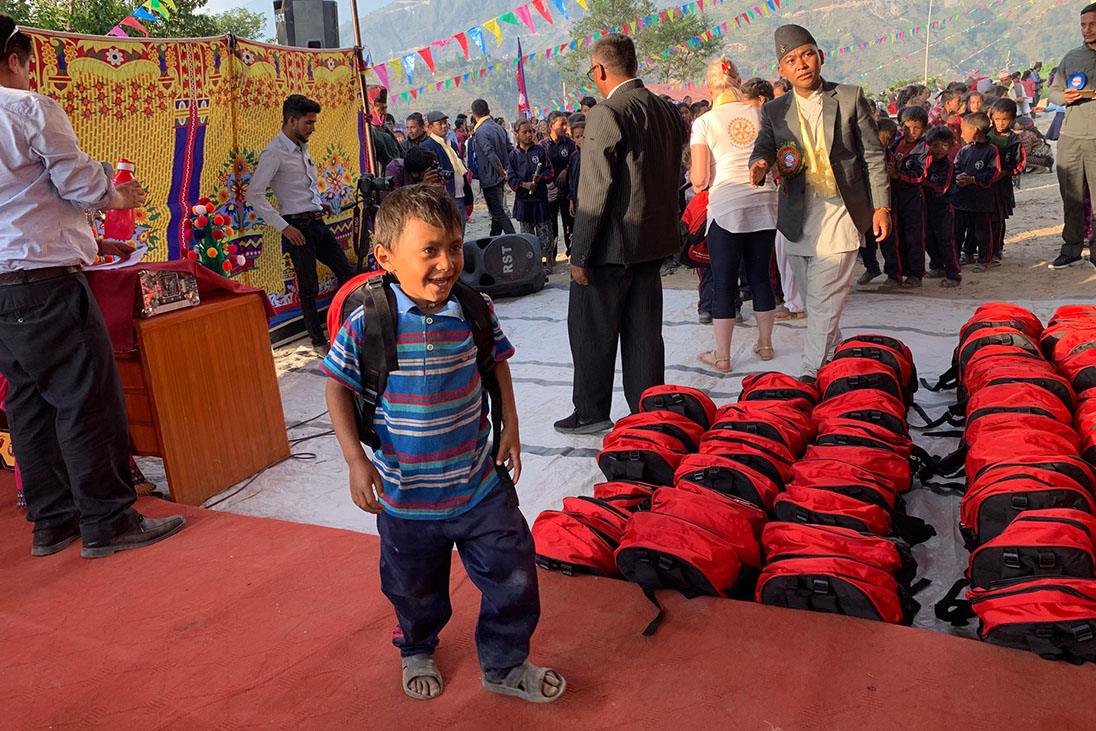

One of the school’s pupils collects his new School in a Bag back pack at the school’s opening ceremony.
The toilet building was built in partnership with an organisation called Healthabitat, which made both financial and technical contributions. The school management committee has been provided training as well as a tool kit for repair and maintenance, in the future.
As of June 2019, there were 133 children attending Shree Saraswoti School.
Fifty children who completed their primary education have moved to a nearby secondary school.
Years of planning finally came to fruition on May 26th, 2019, when the new school was officially handed over to the children.”
In future, the school aims to find enough manpower to run classes up to grade eight so that children can be retained at the school up to full basic education. There are four government-funded teachers at the school.
HELP has recently placed two additional teachers at this school.
Years of planning finally came to fruition on May 26th, 2019, when the new school was officially handed over to the children and I, along with Caroline Ansell, were honoured to attend on behalf of Yeovil Rotary and District 1200.















